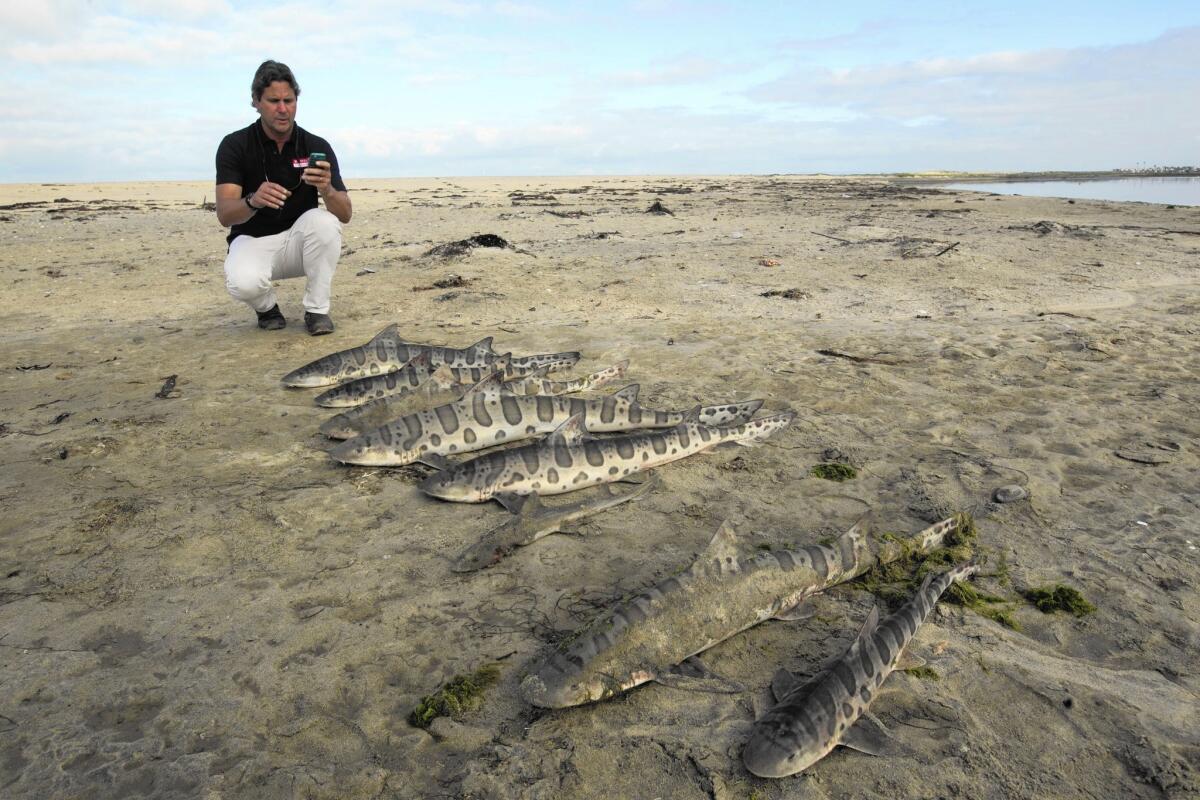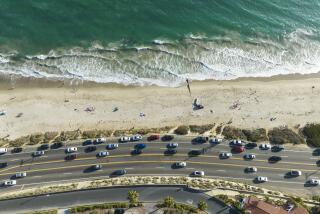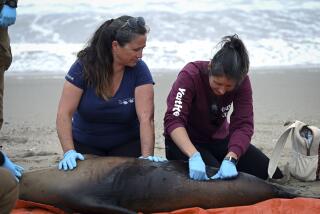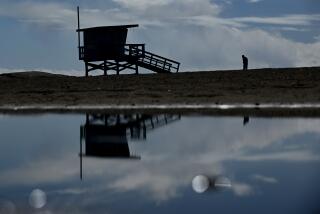Tijuana River blockage floods Imperial Beach streets, kills 50 leopard sharks

Sewage-contaminated water flooded some streets in Imperial Beach over the weekend as sand blocked the mouth of the Tijuana River.
The result created an overflowing, stagnant pool that killed wildlife, including dozens of leopard sharks.
The blockage, which was first reported March 28, was blamed on elevated sea levels caused by El Niño. Sediment flowed from the canyons of Mexico into the binational river and a 2012 sand-replenishing project that deposited 450,000 cubic yards of sand on the shores of Imperial Beach north of the estuary, said Brian Collins, manager of the San Diego Bay and Tijuana Slough national refuges.
See more of our top stories on Facebook >>
The result was a natural dam of 500 cubic yards of sand, which kept the ocean and freshwater from their normal tidal circulation.
“Waves and tides and currents move material around. And, in this case, the swell was just right for this to happen,” Collins said.
An equipment malfunction at Mexico’s International Wastewater Treatment Plant caused sewage to discharge — and compounded the problem.
The “nutrient rich” water created a bacteria bloom that choked oxygen from the water, which killed several fish that swam upriver to feed and were later trapped.
Imperial Beach Mayor Serge Dedina said he counted as many as 50 dead leopard sharks. Their bodies still littered the banks of the river Tuesday and were being eaten by scavengers.
Collins said other fish affected by the blockage included the striped mullet and pipefish. Birds, specifically the light-footed Ridgway’s rail, had difficulty foraging as the contaminated water spread throughout the protected area and flooded their nests.
Collins said the mouth of the river had not been blocked like this since 1983.
“There was millions and millions and millions of gallons of water backed up in the estuary, and it’s stinky because it has sewage in it,” Collins said. “It turned into a public health problem.”
Officials used a backhoe Monday to dredge the opening. It took more than two hours to break through the barrier and restore the river’s flow to the sea.
Collins said it would take a few days before the contaminated water discharges into the ocean. In the meantime, signs have been posted along the beach warning people to stay out of the surf.
debbi.baker@sduniontribune.com
Baker writes for the San Diego Union-Tribune.
ALSO
U.S. agency predicts cheapest summer gasoline prices in 12 years
San Fernando Valley residents sound off on proposed bullet train routes
As Baja resumes bullfighting, Mexicans debate: Is it an art form or a cruel, outdated ritual?
More to Read
Sign up for Essential California
The most important California stories and recommendations in your inbox every morning.
You may occasionally receive promotional content from the Los Angeles Times.










